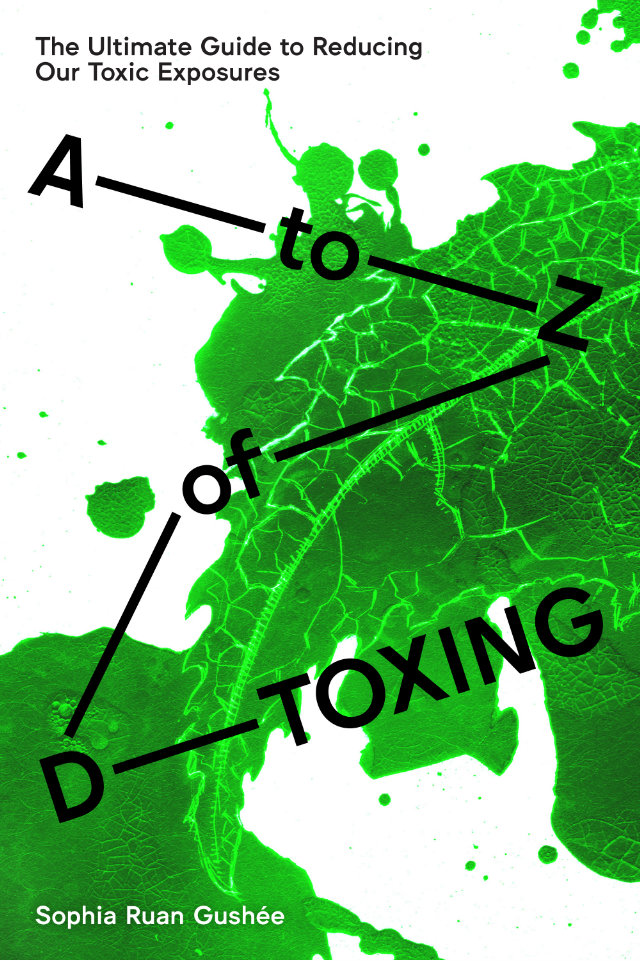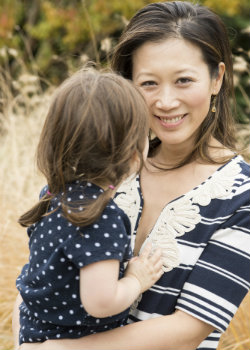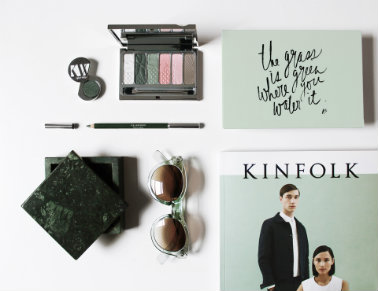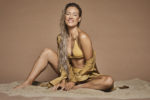
A to Z of D-Toxing with Sophia Ruan Gushee
The Ultimate Guide to Reducing Our Toxic Exposures.
Health-conscious mother of three, Sophia Ruan Gushee invested eight years researching the toxic exposure her children were getting from the outdoors, their home, and their diets.
Her book, A to Z of D-Toxing: The Ultimate Guide to Reducing Our Toxic Exposures, provides a fact-based overview of information with hundreds of tips.
This book is ideal for those who want to protect both human health and the environment. Since they’re both intertwined, it turns out that what’s best for human health is also best for our planet.
This is what Sophia shared with us today. Take note!
While each new discovery was surprising and upsetting, I felt empowered as I responded to what I was learning with determination to figure out safer choices for my family.
BWB: How did you become a conscious consumer?
I have always been interested in health, and how diet can influence our bodies. As a young girl, I loved reading magazines that highlighted foods that boost our immunity or improve our skin. So, from an early age, I have been fascinated by the powerful influences of food. After I had my first child, and as I read about how to care for her, I encountered information about toxic contaminants in food, air, water, and consumer products – even in products that were intended for my baby. While each new discovery was surprising and upsetting, I felt empowered as I responded to what I was learning with determination to figure out safer choices for my family. There are many things we can do to reduce our toxic exposures, and buying consciously is hugely impactful.

BWB: When did you decide to write your book?
I started researching my family’s toxic exposures eight years ago, when my eldest daughter was a few weeks old. She and my younger two daughters motivated me throughout the years to understand a family’s toxic exposures and how to reduce them. Although my children were healthy, their biological vulnerability was obvious to me and my protective instincts were appropriately heightened during these stages.
In trying to identify the factual overview of our toxic exposures, I was surprised at how hard it was to verify facts, get the lay of the land of our toxic exposures, and assess when concern is reasonable versus over-reactive.
As I worked hard to become informed, I was frustrated by how I was learning more about my family’s toxic exposures: at unexpected times—usually late at night, and from many different sources. In trying to identify the factual overview of our toxic exposures, I was surprised at how hard it was to verify facts, get the lay of the land of our toxic exposures, and assess when concern is reasonable versus over-reactive.
Throughout this process, I often wished for one comprehensive book that could tell me everything I needed to know about reducing toxic exposures for my family. The book I wanted didn’t exist. So, once I was pregnant with my second child, I decided that I should create that book because it would be useful for me. It would help me remember key things that I would want at my finger tips, inform those who help me care for my family and homes, and empower others who want to reduce their toxic exposures. I thought it would take me a year to complete the book given the 3 years of research that I had already completed—It took five years because our sources of toxic exposures are more pervasive than I realized!
Awareness and education are key, and A to Z of D-Toxing is truly the ultimate guide to inform and empower you.
BWB: What are some of the goals we should start setting in our homes?
The first goal should be to start learning more. Awareness and education are key, and A to Z of D-Toxing is truly the ultimate guide to inform and empower you. We should think about our toxic exposures as often as we think about how to eat healthier, exercise more, and sleep better. So reading pages of A to Z of D-toxing at a pace that’s comfortable for you will evolve your perspective in important ways. For some, reading even a chapter in one sitting may feel overwhelming; for others, they will be eager to read more. As you become more informed, you’ll start identifying opportunities to d-tox.
Since many have preconceived notions of the term “detox”—relating it to drug addiction or juice cleanses—I chose “d-tox” in an attempt to break free of preconceived notions. I use “d-tox” to refer to editing our lives to reduce the contamination of our bodies and the planet. This translates into editing what we buy and already own, as well as choosing certain behaviors that will reduce our toxic exposures (like having a no shoes policy at home).
Feel good about any healthy change that you make—no matter how small—because change is hard!
Since there are many (almost infinite!) ways to reduce toxic exposures, start d-toxing in ways that are high-impact, yet achievable. Refer to A to Z of D-Toxing to select one tip to incorporate. When you’re ready for more change, refer to A to Z of D-Toxing again for your next step towards d-toxing. Feel good about any healthy change that you make—no matter how small—because change is hard! Most importantly, be slow to let go of what brings you joy. There are many other changes you can make that won’t threaten your joy!
Next, consider your sources of chronic exposures. For example, since most us spend a lot of time indoors, improving indoor air quality is high impact. The EPA estimates that indoor air tends to be 2-5x more polluted than outdoor air, even in the most industrialized cities. So ventilation and fresh air exchange can significantly reduce your indoor pollution.
Research found that using a large doormat and leaving shoes at the door can reduce lead dust and other toxicants by 60%.
Also, house dust can expose you to dozens of toxicants, so fighting the dust should be placed high on your priority list. A to Z of D-toxing provides many tips on how to improve indoor air quality and fight the dust. For example, research found that using a large doormat and leaving shoes at the door can reduce lead dust and other toxicants by 60%. Washing hands is also a great way to reduce your toxic exposures, including from toxic chemical flame retardants.

BWB: Can you share a few tips to help improve our family’s health ?
Sure! The areas below are great places to start, in addition to the categories of indoor air and house dust that were already mentioned.
D-tox your diet.
To choose produce that’s generally safer to buy without the organic certification, refer to the Environmental Working Group’s “Dirty Dozen” and “Clean 15” lists of fruits and vegetables.
Since we generally eat 3 meals a day plus snacks, diet is a high impact area to focus on. I make healthier choices when my schedule and energy permit. But I let go when I can’t control things because the kids are at school, we’re at a party (or throwing a party), or when I’m just too busy and tired. It’s most important to make sustainable improvements rather than dive into drastic changes, feel failure because you can’t sustain the changes, and then give up.
- Invest in the ingredients that you consume frequently. For meat, dairy, or poultry, prioritize your budget for those grown without artificially-added hormones, pesticides, and other contaminants. Avoid or minimize seafood high on the food chain (like swordfish and tuna) can have higher levels of some contaminants, like the neurotoxic mercury; consumption by children should be monitored thoughtfully. To choose produce that’s generally safer to buy without the organic certification, refer to the Environmental Working Group’s “Dirty Dozen” and “Clean 15” lists of fruits and vegetables.
- Increase your diet’s portion of plant-based meals and reduce your consumption of dairy, meat, poultry, and seafood. This will reduce your toxic exposures while also providing healthier nourishment. It will also alleviate the contamination of our planet!
- Consider what touches your food: Our food storage containers and cookware can contaminate our diets too. Plastics—often used as storage containers and plastic wrap—can leach threatening chemicals into the foods and drinks they contain. Nonstick surfaces—which are commonly used for pots and pans, the inner linings of disposable containers, and wrappers for nutrition bars, candy, and more—can also contaminate our diets. Avoid plastics and nonstick surfaces. Both are impossible to avoid completely, but reducing your exposures to them is an achievable goal.
D-tox cleaning products.
Make your own cleaning solutions! I use baking soda, vinegar, hydrogen peroxide, and nontoxic liquid soap to clean my home.
Conventional cleaning products are often made with various chemicals that are linked to a number of adverse health effects, such as respiratory impairment, cancer, birth defects, hormone disruption, and more – including, of course, accidental poisonings. Seek products from companies that are dedicated to making cleaners that are better for both the planet and human health. Better yet: Make your own cleaning solutions! I use baking soda, vinegar, hydrogen peroxide, and nontoxic liquid soap to clean my home. This approach simplifies my shopping list, eliminates concerns over what’s really in my cleaning products, and cleans effectively without threatening my family’s health!
I use products by Tammy Fender for my skin, and RMS products for makeup. I also use Dr. Bronner’s soaps for cleaning our bodies and home.
BWB: What are some of your favorite brands? for the home, but also skincare and makeup?
I love products that are multi-purpose and are safe enough to eat. For example, as frequently as it is appropriate for my skin, I moisturize my body with coconut and sesame oils with drops of 100% pure lavender oil. When my skin is much drier in the winter, I also use organic shea butter on my body, which is richly moisturizing. For my face, I use products by Tammy Fender for my skin, and RMS products for makeup. Removing makeup with coconut oil works great! I also use Dr. Bronner’s soaps for cleaning our bodies and home. I used it on my children’s hair when they were babies.
Buy it HERE !






